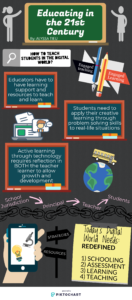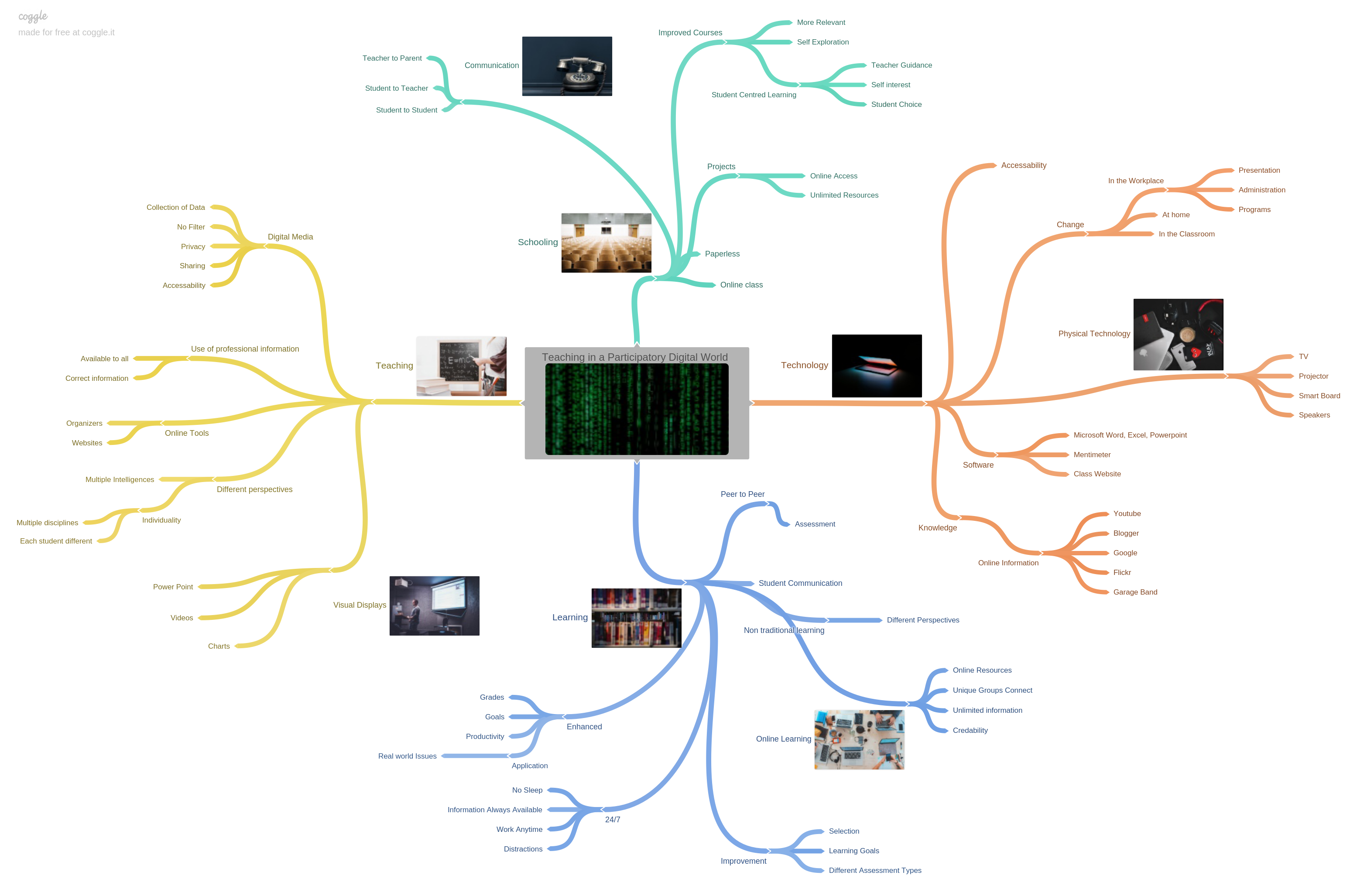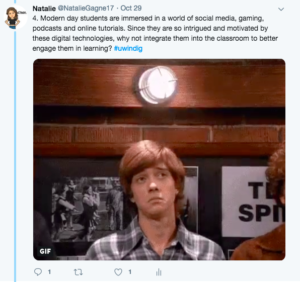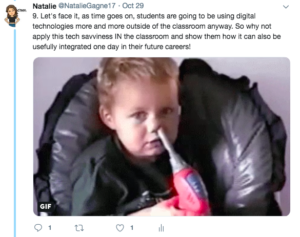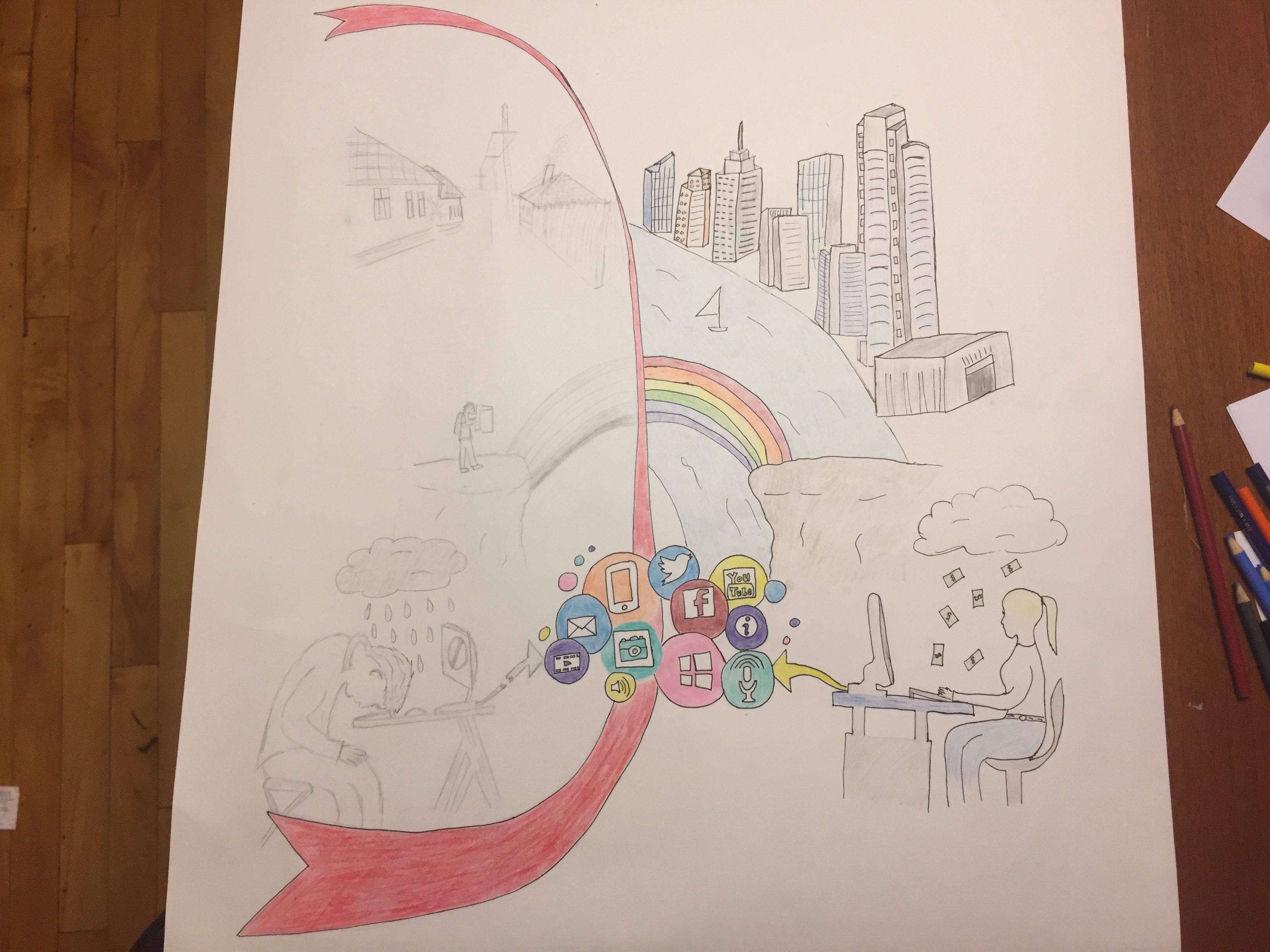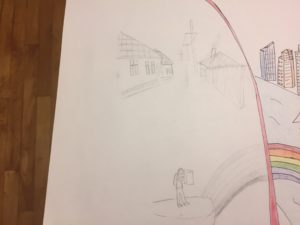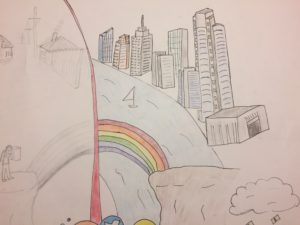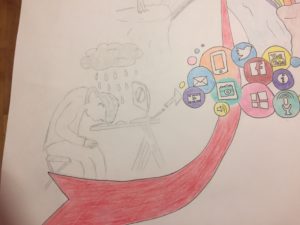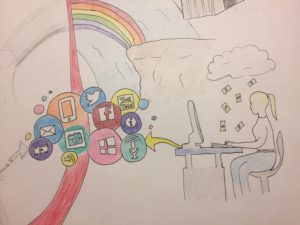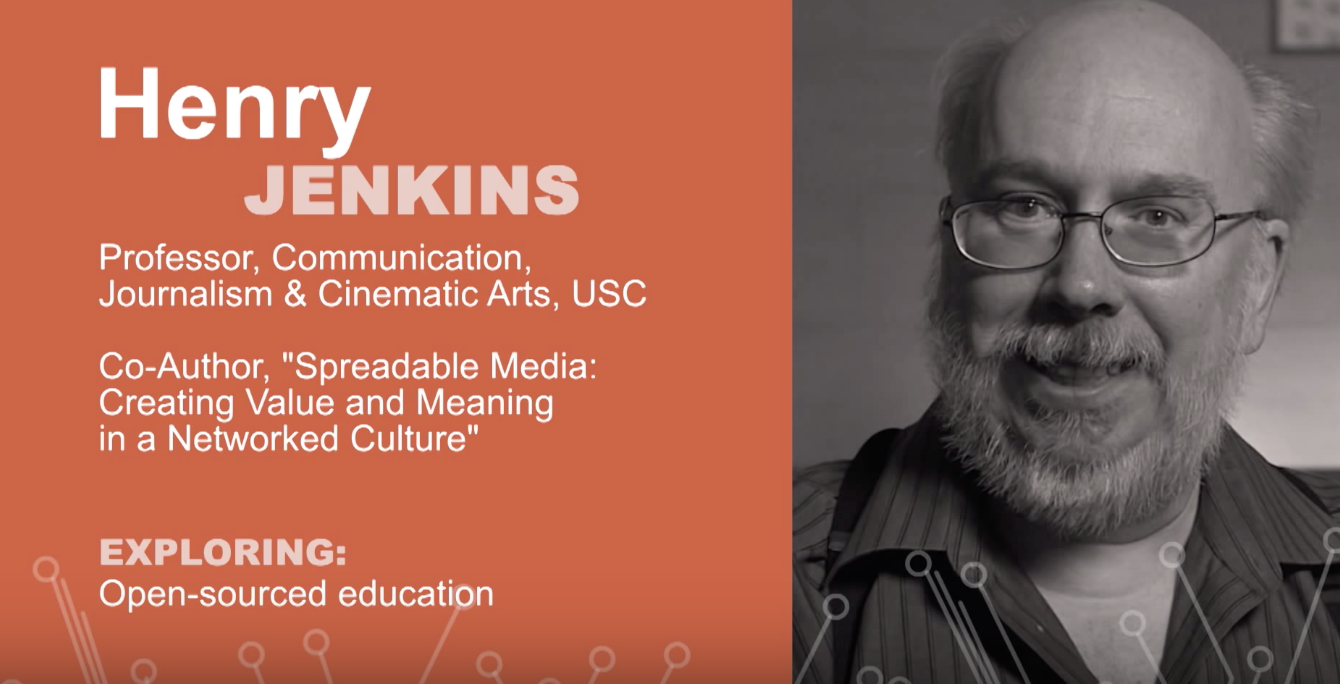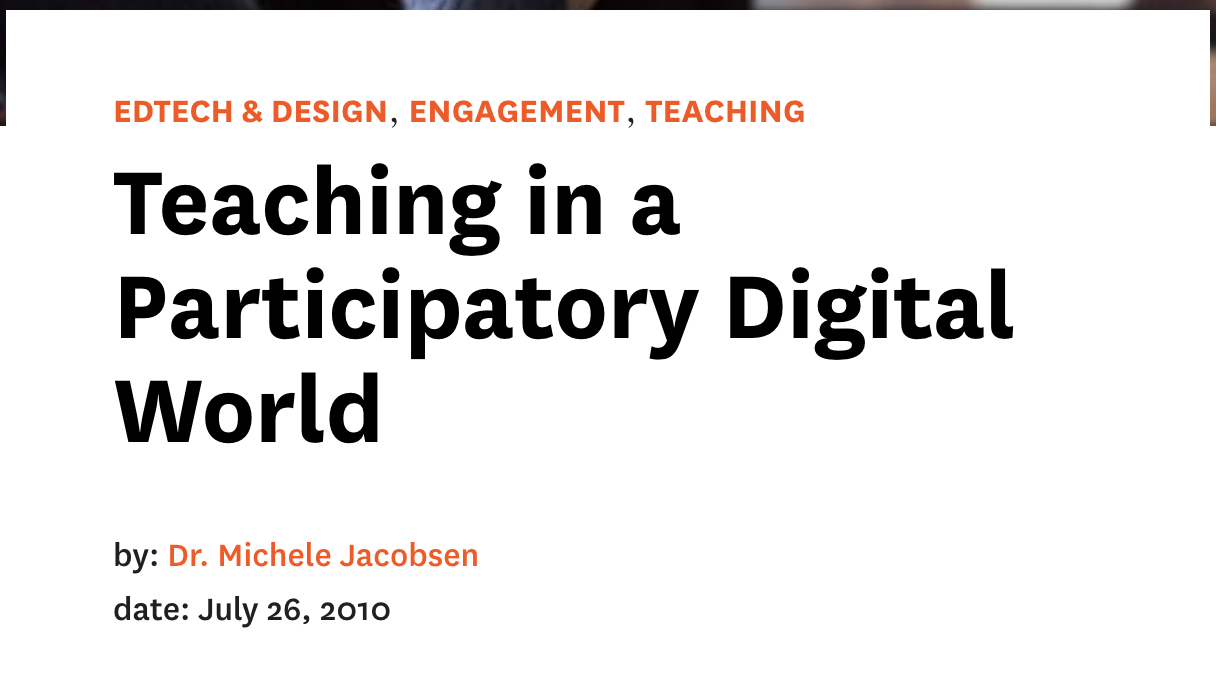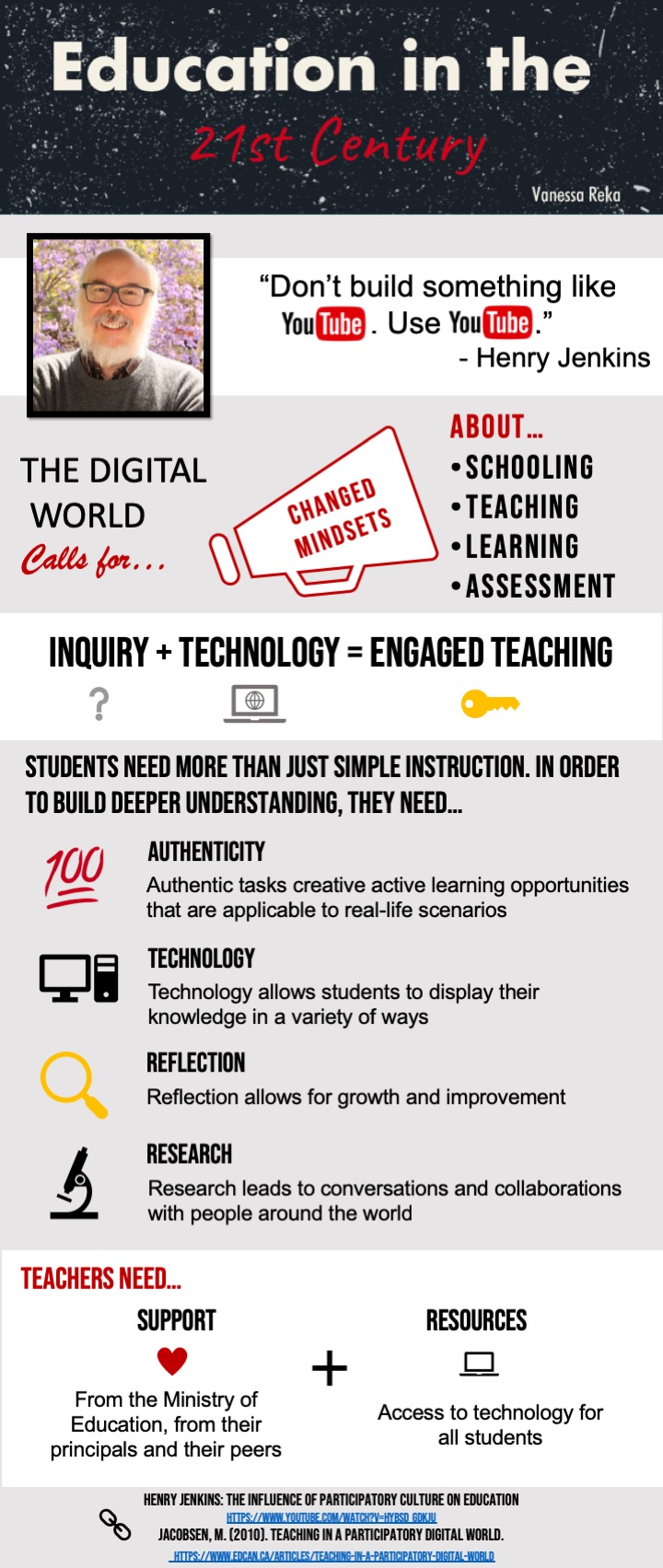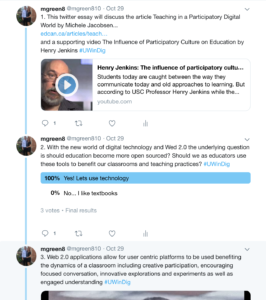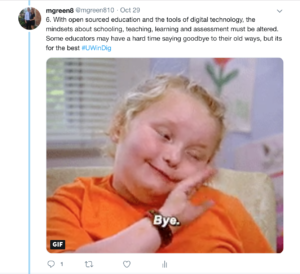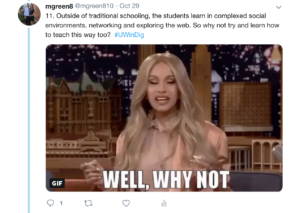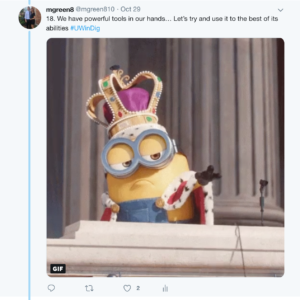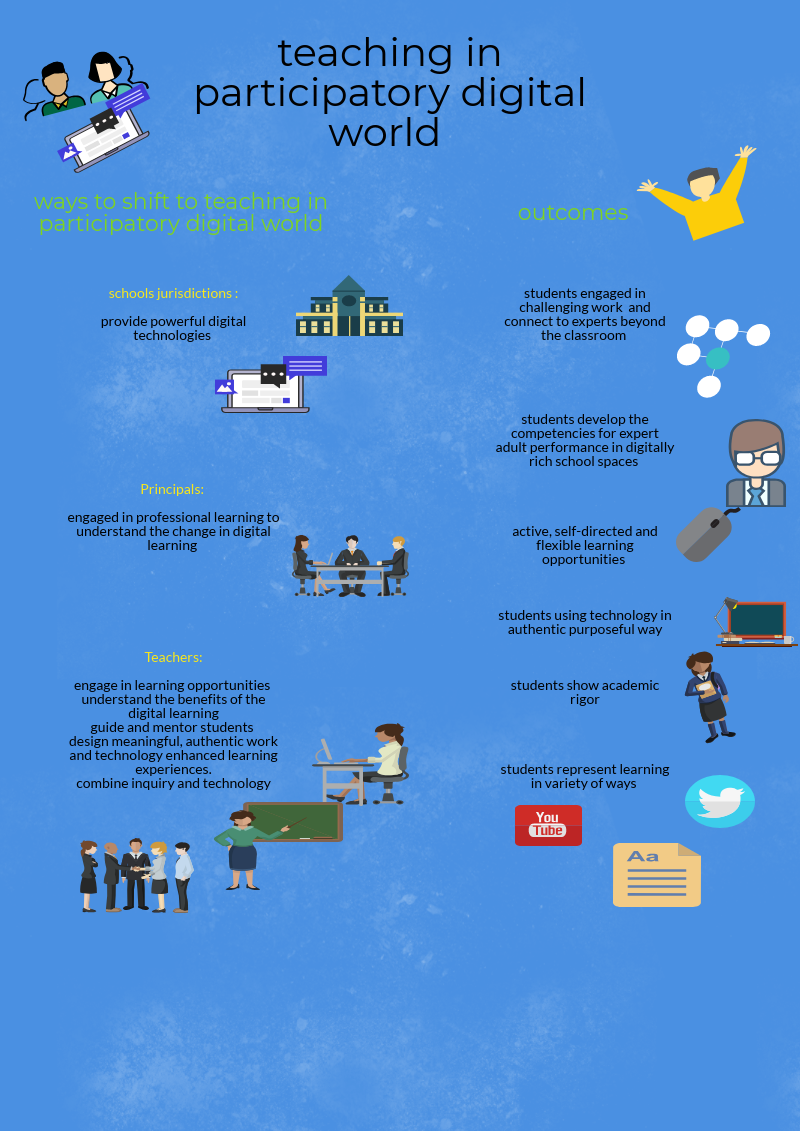Hi Everyone! For this multimedia reflection, I have decided to base it on the article “Teaching in a Participatory Digital World” by Michele Jacobsen. The article discusses educators having the duty to incorporate technology within their classrooms, which I think is a big change from traditional education. Teachers are so used to the “pen and paper” teaching method that some are afraid of branching out and learning more about the technological world. Jacobsen’s article mentions that teachers are often hesitant to branch out and learn technology as it can seem intimidating as there is so much out there to learn, though because of the variety, the possibilities are endless. Once educators are comfortable with navigating through the digital world, they will be able to see the benefits that simply the pen and paper method cannot provide. It is important that teachers gain the knowledge and confidence to incorporate technology into the classroom so that students are able to build upon this. Though technology is definitely an asset to teaching and learning, it must be done effectively to become useful.
Students generally learn their knowledge from their teachers, so the more professional learning and engagement that teachers make to enhance their skills in the digital world, the more the students will benefit. When discovering new methods and tools to make learning of technology less confusing and stressful, teachers should always remember that their job is to guide the students to utilize technology in a beneficial way, rather then for the sake of including it. Both the educator and teacher should be responsible for helping each other out in gathering new knowledge and applying it to real-world applications. This process takes time, but the results are defining.
When reading Jacobsen’s article, I strongly agreed when the point regarding how participatory learning is interactive and requires the support from administration. I do think that this is a valid point as the use of technology only goes as far as the help and resources are available. Personally, I found that in my grade school, technology was almost non-existent. My school was equipped with the technology, but as most of my teachers were afraid to try out something new, or that it would “ruin” a way of teaching they were so used to for years, this lead to the students not being able to have the experiences handing technology in the classroom. Many teachers also found that they did not want to ask for help because it made them feel embarrassed that they were nowhere near experts at handling technology. When Jacobsen mentions administration support, I do think that this is where the participatory learning stems from. The more tools and resources that teachers are provided with, the smaller the learning curve is for them. The support for teachers to be encouraged to educate themselves and use technology in the classroom will only help students greatly in the future.
I found that as I got into high school, the reverse effect occurred. There was a lot of teachers who were digital literate and seemed to be very confident in learning more about how to integrate technology into the classroom, and they were able to openly help other teachers who were still experiencing a learning curve. This reminds me of the article stating that there needs to be a push in school administration to encourage the teachers to access resources and tools, though looking back at my high school experiences, it was the teachers themselves who used the resources and tools to enhance their skills for the classroom and they were very aware that there was a gap between teachers that were digital literate and those who were still learning. I think this aspect really allowed the teachers to benefit from feeding ideas and skills off of each other, therefore creating an environment where the majority of the school was on the same page in terms of technology integration.
Before engaging in the article, I did not ever think to look back about what my experiences were like in grade school or high school in regards to the integration of technology in the classroom. now that I have been able to reflect upon this, I think I have a better understanding of how important it is to have a strong foundation from the school administration and the availability of resources and tools for teachers to use. My high school environment I would say is an ideal environment to describe how technology should be integrated. The teachers are very motivated and willing to learn, and as the article mentions that this aspect does not occur overnight, the results are overall positive in the end. On the other hand, I can understand why some of the teachers in my past have chosen not to integrate technology, either because they were not used to it, were afraid of learning it, etc. but it does not have to be this way. Now that we are aware of the technologies available, we as educators can help each other out.
After reading the article, I feel that I now have a better understanding of how much it means for a school’s feedback and encouragement makes for teachers in general. The more emphasis that the school and administrators give on technology integrating is what allows teachers to become more educated about what they are getting themselves into, and being able to play around and see what they like most and what aspects they still would like help in. I think that teachers would value more days where they are introduced with all the available technology and have opportunities to explore them with their colleagues. It would be a nice idea to allow teachers to try things out and hear feedback from each other on ways they can see themselves integrating something into their classroom.
For this multimedia reflection, I have decided to use Piktochart to create my infographic. I found that it was easier for me to use a blank sheet rather than choosing an existing template as those did not offer much leeway in terms of altering the layout. I had in mind a school style setting to display my thoughts. Using the chalkboards, I decided to put the key points of the article which I found were most important inside these chalkboards. As the article discusses digital technology in the 21st century, I found that including a question in the “search bar” would represent how teachers are curious of the ways in which they can learn about technology and integrate it into their classroom. Often times, teachers may turn to the Internet as resources if the school’s administration lacks this component. Due to this, I decided to create a chain link to display how the school’s jurisdiction is related to the students. If one of the key components (either school jurisdiction, principals, or teachers) are lacking, this will break the chain and students will not have the full potential of technology learning in the classroom. I also think that it is important for teachers themselves to have some guidance in learning how to integrate technology, starting off slow by getting used to having technology in the classroom is an easy start, but having ample resources and tools readily available all around will make this transition easier. The bus and globe represent a change in the education. As the content of education may not be changing, the ways in which they are presented will. As educators, we must not “fall behind” on the bus because others around us will be getting ahead with integration of technology which is changing as we speak. In terms of the digital world’s needs today, I made an acronym to easily remember the key aspects that are involved: SALT (school, assessment, learning, teaching).
Overall, I enjoyed creating the Piktochart and thought that it gave me some hands on experience with using a different technological medium that I have never been exposed to before. From this, I think I am now more comfortable and open to trying other mediums in the future. The only thing that I found hard to use about this program was resizing. I found that the program is not very user-friendly when trying to resize a text box or graphic as it would change to the desired size, and then revert to the original.
